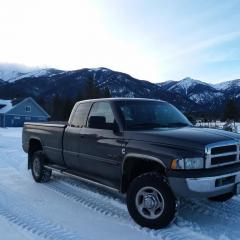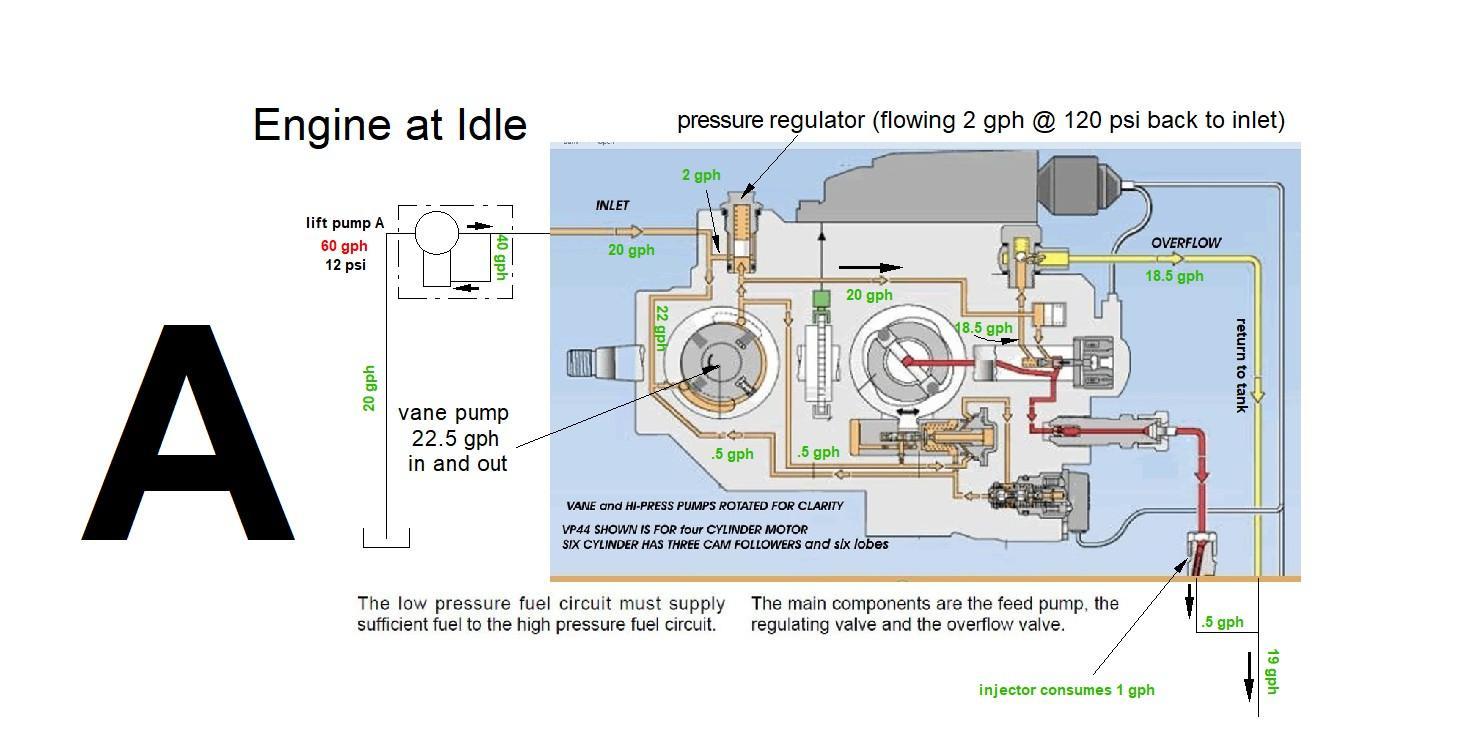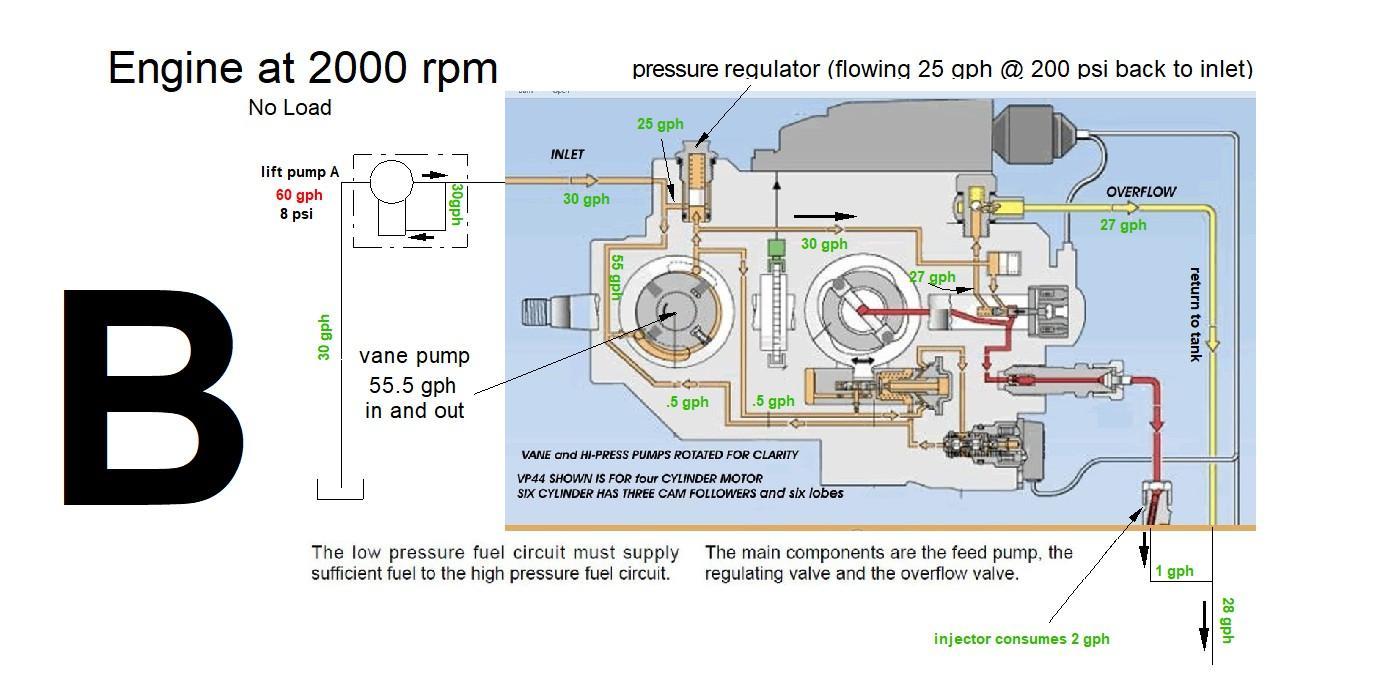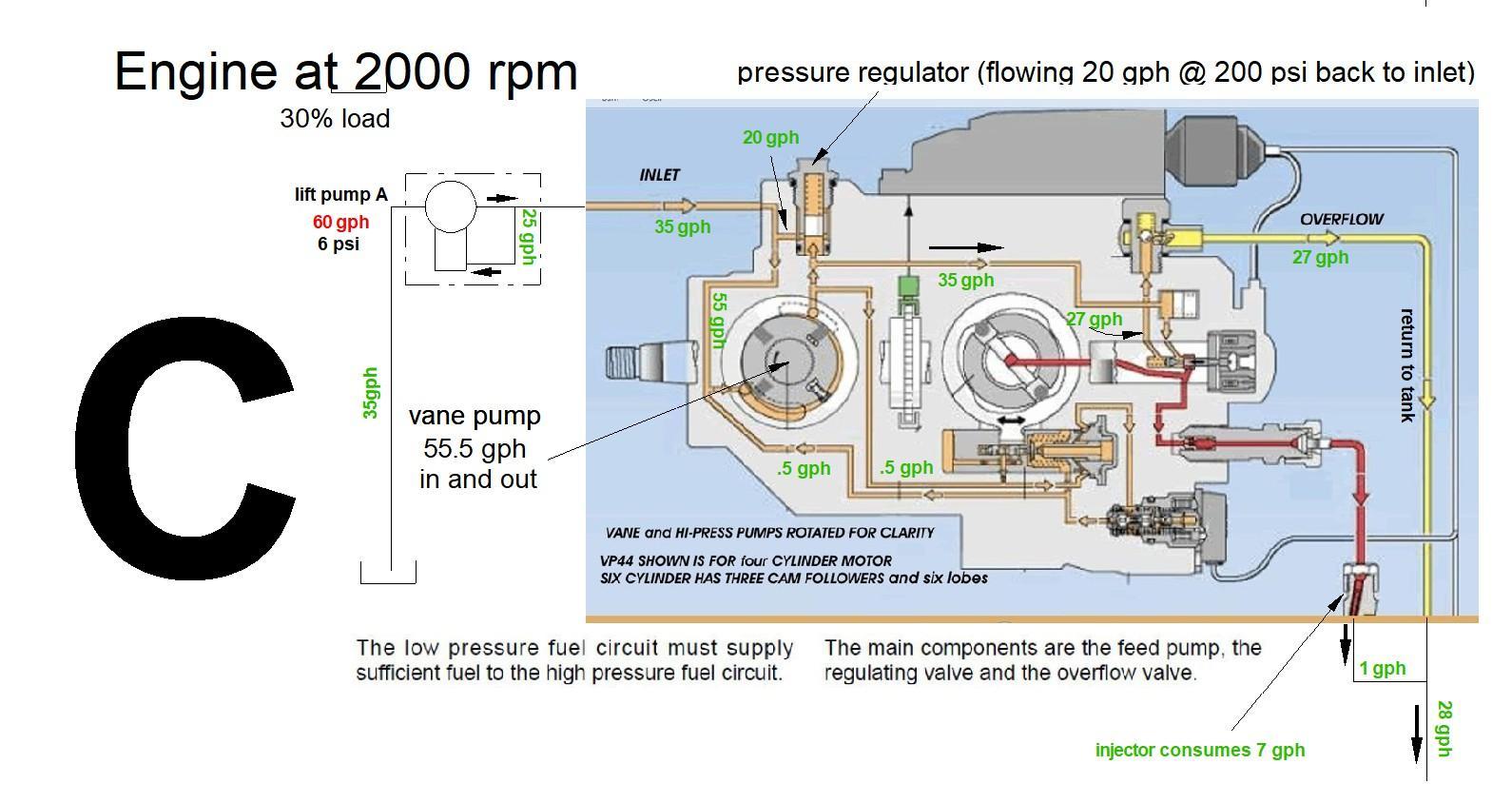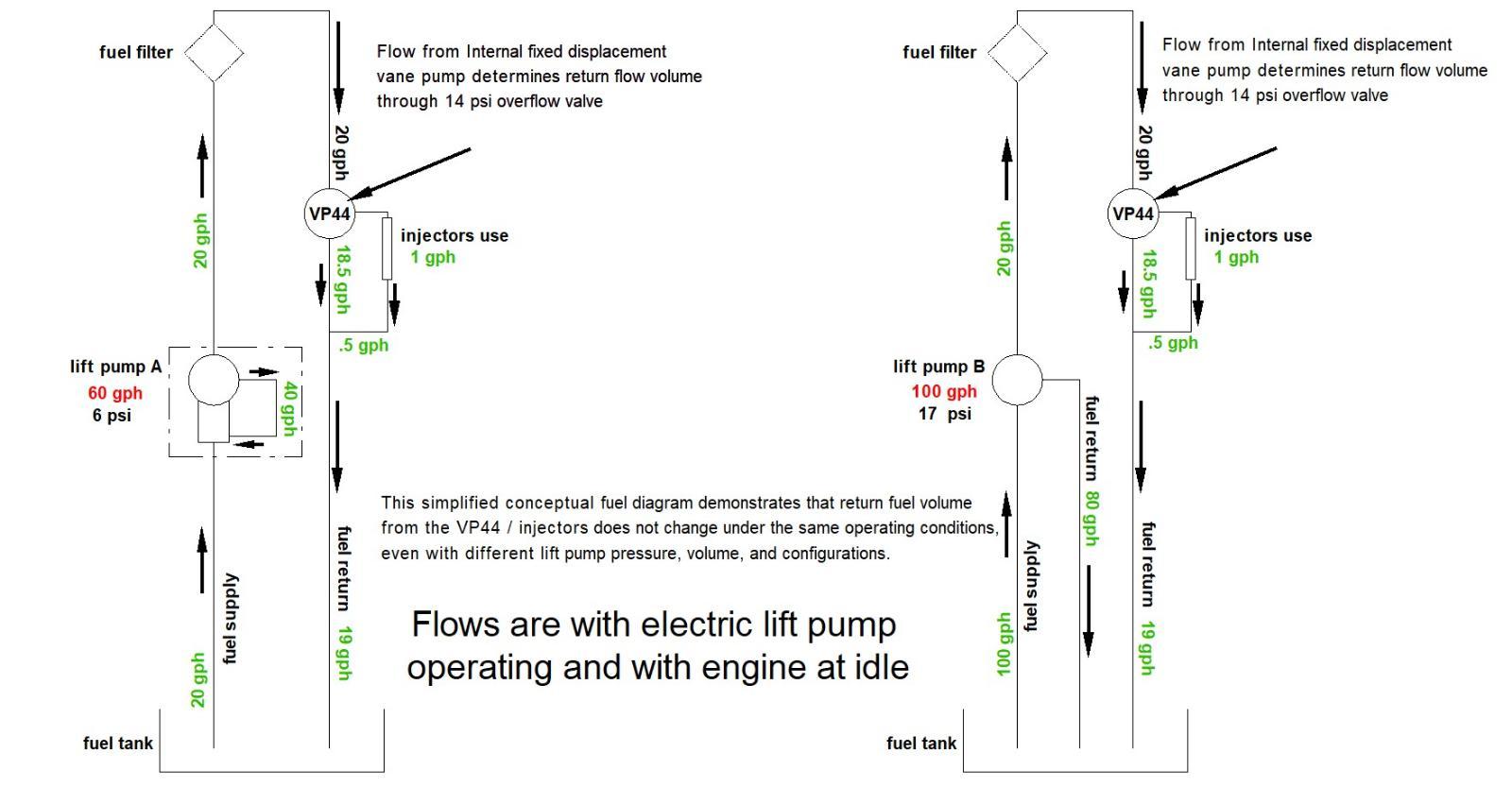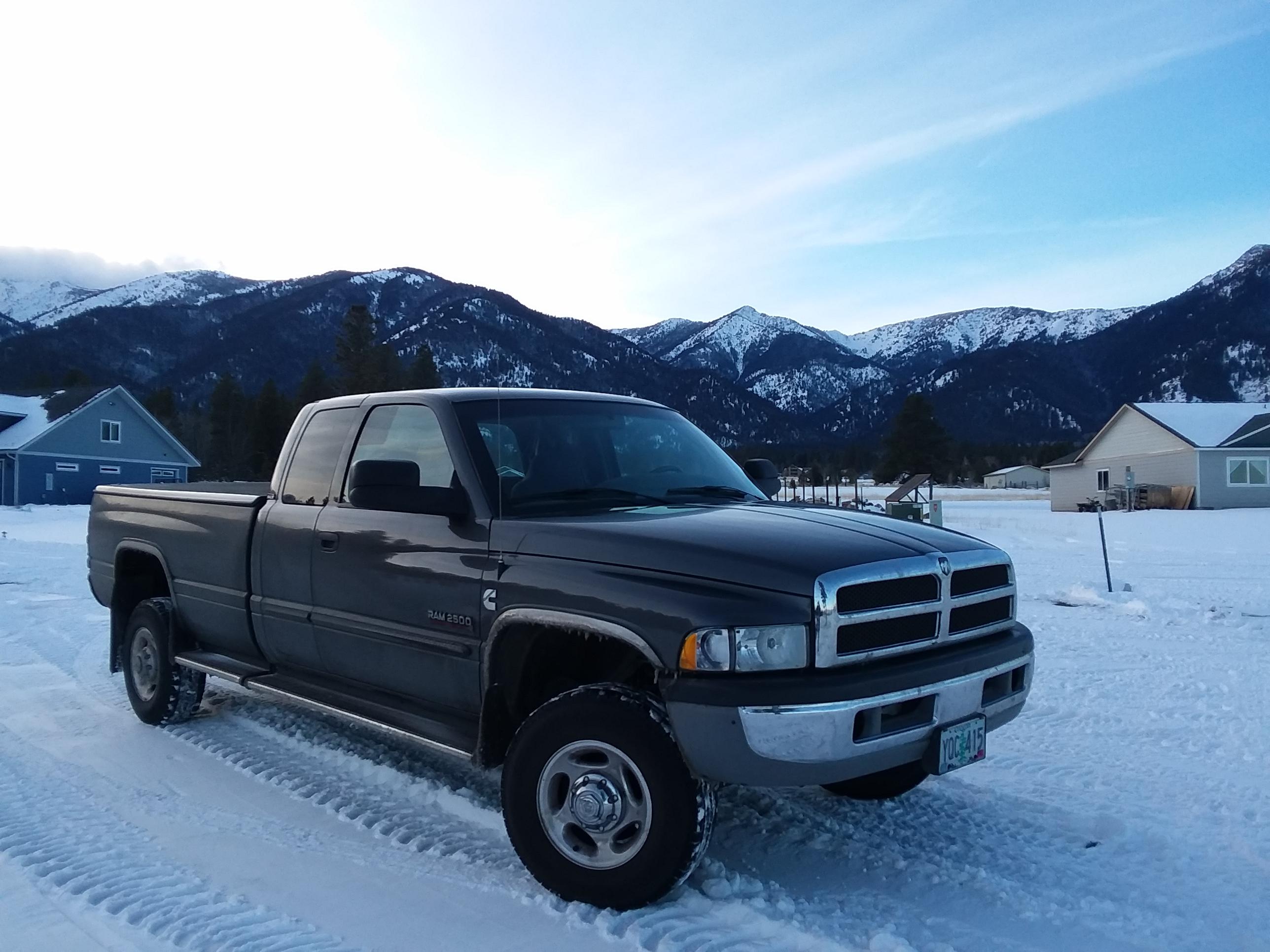
Everything posted by Tractorman
-
Few random questions..
What I have always looked for when looking for engine performance in a vehicle is, "what will be the engine rpm in a specific gear at a specific highway speed that I would drive at based on a specific engine (gas or diesel). Engine performance charts are the place to get this information. At minimum, I would want to know at what engine rpm is peak torque and peak horsepower. Engines typically perform best just above their peak torque rpm, or at least around their peak torque rpm. For example, my stock '02 Cummins is 245 hp and 505 lb/ft of torque. The horsepower rating is at 2900 rpm and the peak torque rating is at 1600 rpm. This is why engine rpm's between 1800 and 2000 work well with @Mopar1973Man's final drive ratio recommendation. A '99 Ram 5.2 gas engine specs are 235 hp and 300 lb/ft torque. But the horsepower rating is at 4400 rpm and the peak torque rating is at 3200 rpm.. In general, this would tell me that a rear axle ratio of 4.10::1 would be more suitable because of the peak torque rpm. Knowing every gear ratio for the transmission and tire diameter will be key for getting this right. - John
-
Replaced track bar, steering wheel is now "off"
I have not experienced death wobble myself. From many articles I have read, it seems that there is a consensus that it is not likely that any one worn steering or suspension component would trigger a death wobble. However, with many slightly worn components, the sum of all the worn components could trigger a death wobble. Also, larger tires and wheels can play a role. - John
-
Replaced track bar, steering wheel is now "off"
I would at least do a visual check sighting down the side of the truck from the front right corner and then from the front left corner to see if the axle is centered under the truck. If appears to be okay, then I would re-center the steering wheel. After re-centering the steering wheel, I would turn the steering wheel from center all the way right and then left to see if the number of turns are equal in both directions. If they are equal, the sector shaft in the steering gear box is centered as it should be and all is well. If the number of turns are significantly different, there is a problem somewhere in the steering or suspension system that needs to be addressed. - John
-
Replaced track bar, steering wheel is now "off"
I have more questions than answers. Are you the original owner of the truck? Were any of the replacement track bars adjustable? Has anyone ever re-centered the steering wheel during life of the truck? Is the truck lifted? If everything is still stock (including replacement track bars) and no steering or suspension parts are bent or damaged in some way, I think it would be okay to re-center the steering wheel using the adjustable sleeve near the pitman arm. - John
-
WHIRRRR?
It may help to pinpoint the noise source by trying this road test: * Lock out the overdrive and accelerate the truck to 2000 rpm in third gear. Take your foot off of the throttle and observe the noise. * Lock the transmission into second gear and repeat the test. * Lock the transmission into first gear and repeat the test. Does the whirring noise sound about the same in each test? If it does, then it would seem that road speed is not relevant. This would rule out things like driveshaft, transfer case and differential. When I have difficult problems to diagnose, I try to be very specific with my methods of testing and reporting the results. You have mentioned that the noise is heard when decelerating, but you did not say a specific rpm when the deceleration starts or a specific rpm when the noise quits. Specific detail from you may help pinpoint the cause of the whirring noise you are experiencing. - John
-
Brake Light Switch..."DO NOT REINTSALL"
I am fairly certain it is a remanufactured pump. My VP44 was replaced at 87,000 miles under warranty in August, 2005 - 0216 code and you could hear that it had a timing issue. The code was actually being set one year and 20,000 miles earlier in August, 2004, but I continued driving the truck. I learned how to drive around the limp mode. When the warranty work was completed, I was bummed that I got a remanufactured VP44 - not a new one. But, after lots of research, I learned that Bosch had several problems with their VP44 injection pumps, such as rotors that didn't get deburred, timing pistons/ cylinders that were made from inferior materials, PSG's that had solder issues, a plastic diaphragm to absorb pulsations, etc. Bosch addressed these issues, but did not mention the details to the general public. After learning all of this, I changed my mind and I am very happy that I got a remanufactured VP44. I currently have just over 270,000 miles on my replacement VP44. So, by the time we got our 2002 trucks, I think the remanufacturing process was beginning to take care of all the afore-mentioned problems. - John
-
Strange Power relay reseting
Here is a diagram of the fuel pump relay circuit. Note that there is a joint connector in the PDC in the grounding circuit. - John
-
Strange Power relay reseting
I am assuming this is a relay for the fuel transfer pump. This relay should get its power to the coil portion of the relay from the ECM - yellow/whit wire that used to be directly wired to the fuel transfer pump. A fused circuit from the battery should go to the load portion of the relay. This relay should power only the fuel transfer pump. Since you have identified a red/green wire on this relay, I believe you are talking about the fuel pump relay in the power distribution panel. This relay supplies power to the VP44 only. The power to the coil portion of the relay comes from the ECM - a brown/white wire. The ground for the coil is a black wire and is grounded on the left inner fender area. This ground is important. Fuse #3 (20 amp) in the power distribution panel supplies power to the load portion of the relay via a red/white wire. Can you confirm what I have written? - John
-
LF Wheel Hub Play
No worries. There will be embarrassment for a very brief moment and then you will forget that it ever happened. - John
-
LF Wheel Hub Play
I think everybody missed the fact that you have a two wheel drive even though it is shown in your signature, I know I did. Otherwise, I would have mentioned that you could have inspected and adjusted the wheel bearings if they were in good condition. - John
-
Oil leaking out the draft tube
Me neither... - John
-
Brake Light Switch..."DO NOT REINTSALL"
It is beyond my ability to comprehend as to why a simple brake light switch would be engineered in such a manner that it could not be reused. i suppose if you removed your brake pedal, you couldn't use that again either. - John
-
Brake Light Switch..."DO NOT REINTSALL"
About 150,000 miles ago my brake lights were staying on. I removed the brake light switch and modified it to be reusable. I cannot remember what I did to it, but I know it was simple. I am currently using the original switch now with over 350,000 miles on it. - John
-
Need help diagnosing morimoto HIDs not working
May not be related to what is going on now, but a melted fuse holder is a sure indicator of a poor connection inside the fuse holder. The heat generated from the resistance of the poor connection (voltage drop) melts the fuse holder. Definitely worth checking out and maybe worth performing a voltage drop test at that location. - John
-
Daniel Stern Lighting Sport Headlight Harness
I think the changes were made for safety. On higher speed limit two lane highways, a vehicle signaling for a left turn from the highway is easily recognized by on coming traffic when the vehicle making the left turn has turn signals that switch off the driving lights and only operate the turn signal. From what I have read, earlier versions allowed the driving lights to remain on when operating the turn signal. This made the turn signal more difficult to see for oncoming traffic and sometime contributed to collisions. I use Daniel Stern's turn signal driving light module to make the turn signals be driving lights when the headlights are not being used. The module is designed to give the driver the choice of leaving the opposite driving light on when using the turn signal or turning off the opposite driving light when using the turn signal. I have mine set up to turn of the the opposite driving light. As soon as the park light or headlights are turned on, the driving lights stop operating. - John
-
How do you keep the bugs out of your radiator ?
We all do it. Some are just more humorous than others. Yours was humorous. - John
-
How do you keep the bugs out of your radiator ?
Is that a politically correct way to say, "stolen stuff" ? - John
-
Doing a conversion from Auto to standard
If I were going to spend the time and money to do a swap to a manual transmission, I would skip the NV4500 and go for a NV5600 or a G56 six speed (both more heavy duty and more reliable than the NV4500). Both six speeds have a close gear ratio which gives you the proper gear for any driving situation. Plus, you don't have to worry about when the fifth gear nut breaks or falls off (NV4500). - John
-
Elec help - no dash lights, no cruise control, no power to ODB etc…..
As @JAG1mentions, a ground could be the problem. It wouldn't hurt to recheck the wire connections - sometimes a terminal can be pushed back into to the connector and not make contact when the connector is reconnected. Another place that could be a problem is right where the tilt wheel operates. There are multiple wires there where the strands can break internally, but the insulation is still intact. The problem is caused by lots of miles and years of operating the tilt steering wheel which flexes those wires. I had a ground wire break at one of those connection points and caused an airbag light, no HVAC controls, abs warning light, and something else. When I removed the six wire connector for repair, another wire fell off. Likely, it is related to something you did during the your repairs, just re-think it through and you may figure it out. - John
-
New 2022 3500 Dodge Tradesman 6.7 HO Aisin ordered and coming in the fall ???
That's why I have always used 75/140 in the engine. It also is best for oil leaks because it solidifies before reaching the ground - doesn't stain my driveway. Ok..., just kidding. Oh yes they did! They were so reliable and did so much work for you for such a long, long time that you learned to replace them with another one! - John
-
Truck randomly dies. Please help, pulling my hair out, and loosing sleep!
I think I would disregard DAP's suggestion. If it was the case, the engine would not be able to be restarted without bleeding the injector lines since the starter cranks the engine at a much lower speed than idle. Also, anytime it is necessary to bleed the injectors (such as after replacing a VP44), only two or three lines are cracked. Nobody bleeds the remaining lines - they self-bleed while the engine idles. - John
-
VP44 Injection Pump Teardown - How it Works
Thank you guys for posting that you cannot see the pictures. Something strange is going on. When I first posted them, I could see them fine, even after a couple of edits. Just now when I viewed this thread I could not see the pictures. I went to page 6, then back to page 5 and now I see the pictures just fine. I am not sure what is happening, but I hope @Mopar1973Mancan fix it. - John @MikeH, @dripley . and @Great work!, try going to a different page and come back to page 5. Each time I do that, it works for me. - John
-
VP44 Injection Pump Teardown - How it Works
The three diagrams below (A, B, and C) show low pressure fuel flow inside the VP44 injection pump. The purpose of the diagrams is to show what I believe is going on inside the VP44 pump, specifically, the role of the internal vane pump. The flow to the injectors, the overflow valve, and other various internal VP44 components is supplied by the internal vane pump, not the lift pump. The flow rate value that I chose for the internal vane pump is based on my return flow rate shown in one of my previous posts. That test shows that the engine at idle returns 19 gph to the fuel tank. Based on this number, I assigned 22.5 gph for vane pump output in Diagram A. This equals 13 cubic inches of fuel per one vane pump revolution. There are 400 vane pump revolutions per minute when engine is idling at 800 rpm. There are 231 cubic inches in one gallon of fuel. A couple of things worthy of mention: From Jeeper Jimmy a few years ago, The first thing the incoming fuel sees in the VP44 is a vane-type fuel pump (called by Bosch the ‘Internal Fuel Pump’) which raises the pressure to “8 – 22 bar (116-319 PSI) depending on the application and RPM” (direct quote from VP44 Service Manual and Bosch Fuel Injection Pump Manual). From the FSM (2002), A greater quantity of fuel is required for cooling the VP44 than what is necessary for engine operation. Because of this, approximately 70 percent of fuel entering the pump is returned to the fuel tank through the overflow valve and fuel return line. You will find that fuel return flow exceeds 70% of fuel entering the pump in all three diagrams. Circuit A - 95% of fuel is returned Circuit B - 93% of fuel is returned Circuit C - 80% of fuel is returned There may be errors in my calculations - please let me know if something does not make sense. - John
-
Odd find in my 6 speed shift tower
I find that quite unusual as well. I replaced my shift tower with a short shifter, but I didn't like it - mainly because the leverage was lost to return it to center. I re-installed my OEM one a few thousand miles later. The end shaped like a ball had no sign of wear. Neither did the plastic part, both over 350,000 miles. It makes me wonder if there was lack of lubrication in the shift tower on your truck. - John
-
VP44 Injection Pump Teardown - How it Works
Okay, I got it backwards. The point is, the fuel supply to the VP44 is separate from the fuel return from the VP44 / injectors on your truck.. That is why your fuel temperatures run cooler than most. Are saying that you believe your AirDog 165 lift pump (15 to 17 psi) is providing more return fuel from the VP44 / injectors than a stock lift pump? Because, if you are, then this is where we may have to agree to disagree. The point of my testing is to show that fuel cannot be forced through the fixed displacement vane pump in the VP44, regardless of lift pump pressure or lift pump volume. The lift pump pressure is 12 psi in Test #1 and #2 and 0 psi in Test #3 and 4. The return fuel flow volume did not change regardless of lift pump pressure. The diagram below shows a general concept of how I believe the fuel system works. This diagram only represents my idea of how the VP44 fuel system works. - John


